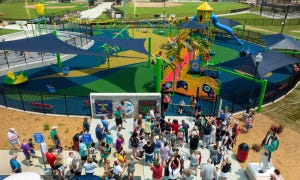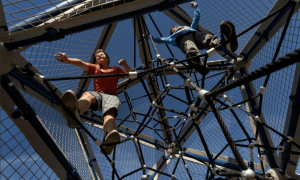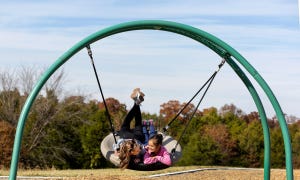Play is a fundamental aspect of childhood development, fostering physical, social, and cognitive growth. For children on the autism spectrum, engaging in play can be both challenging and crucial. In this blog post, we'll explore why it's essential for these children to play on playgrounds, backed by scientific evidence.
Understanding Autism Spectrum Disorder (ASD)
Autism Spectrum Disorder (ASD) is a developmental condition that affects various aspects of an individual's brain function. Children with ASD exhibit a range of behaviors, including deficits in communication skills, social interactions, and stereotyped behaviors5. Their abilities can vary significantly, making personalized approaches necessary.
The Role of Play in ASD
1. Social Interaction and Communication Skills
Playgrounds provide a unique environment for children with ASD to develop social interaction and communication skills. Research has shown that play can improve these essential abilities6. By engaging in play, children learn to share experiences, understand nonverbal cues, and interact with peers. Structured play sessions can help bridge the gap between solitary play and meaningful social connections.
2. Sensory Regulation and Stress Reduction
Outdoor play offers sensory-rich experiences that contribute to overall well-being. For children with ASD, exposure to different textures, sounds, and movements can support sensory regulation and reduce stress3. Playgrounds with diverse equipment allow them to explore and adapt to sensory stimuli, promoting emotional balance.
3. Motor Skills Development
Playgrounds encourage physical activity, which is essential for motor skill development. Climbing, swinging, and running help improve gross motor skills, agility, and balance. These activities also enhance handgrip strength and flexibility, benefiting children with ASD3.
4. Therapeutic Play
Therapeutic play involves purposeful activities designed to address specific needs. Playgrounds equipped with sensory-friendly features, such as calming swings or textured surfaces, offer therapeutic benefits. These elements promote engagement, self-regulation, and emotional expression4.
Designing Inclusive Playgrounds
To optimize the benefits of playgrounds for children with ASD, consider the following design characteristics:
- Sensory Considerations: Create spaces that accommodate sensory sensitivities. Soft surfaces, quiet corners, and shaded areas can provide comfort.
- Structured Play: Initially, structured play sessions guided by adults help children learn social rules and interaction patterns. Gradually, they can generalize these skills to unstructured play.
- Equitable Access: Inclusive playgrounds allow children of all abilities to play together. Shared experiences foster connections and understanding.
Creating Spaces of Playful Equity
Playgrounds are more than just recreational spaces; they are essential for the holistic development of children on the autism spectrum. By providing opportunities for socialization, sensory exploration, and motor skill enhancement, these playgrounds become bridges of connection and joy for all children. Remember, every swing, slide, and sandbox holds the promise of growth and friendship for children with ASD. Let's celebrate inclusive play and create spaces where every child feels welcome and understood.
---
References:
Harris, K., Rosinski, P., Wood-Nartker, J., & Hill Renirie, R. (2022). Developing Inclusive Playgrounds That Welcome All Children—Including Those with Autism. Review Journal of Autism and Developmental Disorders, 1033. 5
Arslan, G., Aksu, H., & Cengiz, T. (2020). The importance of outdoor play for autistic children and young people. BERA Blog. 3
Autism Speaks. (2022). What Is ASD? Retrieved from source 5
Cross River Therapy. (n.d.). Autism and Public Spaces: Autism-Friendly Playgrounds. Retrieved from source 6
Source(s)
1. Developing Inclusive Playgrounds That Welcome All Children ... - Springer
2. Autism and Public Spaces: Autism-Friendly Playgrounds
3. The importance of outdoor play for autistic children and young ... - BERA
4. The Importance of Play for Autistic Children - Autism Awareness
5. The Significance of Inclusive Playgrounds for Children with Autism
6. The Games They Play: Observations of Children with Autism Spectrum ...
7. A Systematic Review of Play-Based Interventions Targeting ... - Springer
8. Children with Autism Spectrum Disorder in the Mainstream Playground - ed
- Trails (27)
- Schools (193)
- Press Releases (109)
- Playground Funding (5)
- Play Science & Research (62)
- Parks & Recreation (363)
- Outdoor Fitness (138)
- National Demonstration Site (32)
- Landscape Architects (79)
- Inclusive Play (109)
- Daycare and Early Learning (62)
- Custom Play (38)
- College Campus (28)
- Churches (51)
- Challenge Course (30)
- Featured Projects (77)
- BluePrint for Play (18)
- Site and Shade (9)





